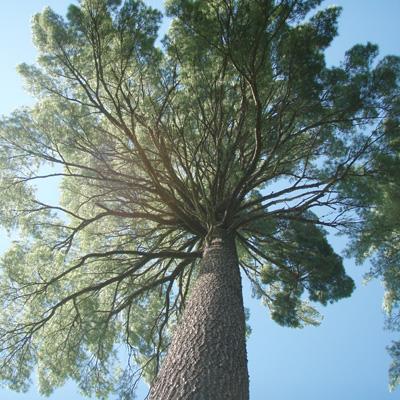Species Spotlight: Eastern White Pine (Pinus strobus)
This storied tree provoked riots, led to war, and was declared the property of kings. The eastern white pine was critically important to the British Royal Navy in the early 1700s to make ship masts. British domestic supply of sizable trees was exhausted and imports from Europe were difficult. The eastern white pine was so important that King George I declared every eastern white pine greater than 12 inches in diameter the property of the monarchy and any illegal harvest was subject to fines. Surveyors of the king went into the countryside and laid claim the trees with a symbol of three hatchet slashes known as the king’s broad arrow. Mounting fines and building tension between American colonists and the British led to the pine tree riot of 1772. Sawmills in the town of Weare, New Hampshire were found with marked trees and they refused to pay fines. The owner Ebenezer Mudgett was to be thrown in jail unless he paid bail. Mudgett marched to town with 20 men and they attacked the sheriff and deputy. Ultimately, the rioters were let off with little more than a fine. This incident is a lesser known event in the leadup to the Revolutionary war.
Prior to heavy logging in the 1800s, the eastern white pine was much more abundant in the Appalachian range and the northeast. However, they have become less common over time due to their valuable lumber. The lumber is used for timber frame homes, doors, trim, molding, cabinets, siding, paneling, and flooring. Even though the eastern white pine has become less abundant, it remains a sustainable tree because of its fast growth and great size. A mature eastern white pine can reach up to 150 feet tall making it one of the tallest Mid-Atlantic trees. Because of its great size, the eastern white pine supports a great deal of wildlife. Large trees are often used by bald eagles as nesting sites. Numerous songbirds also use eastern white pines as nesting sites. Pine seeds are eaten by songbirds and squirrels. These trees also support 243 species of butterfly and moth with one notable species being the Luna moth. The eastern white pine is a beautiful tree with year-round interest and one you should consider planting in your yard.

https://newenglandhistoricalsociety.com/new-hampshire…/
https://www.fs.usda.gov/database/feis/plants/tree/pinstr/all.html

